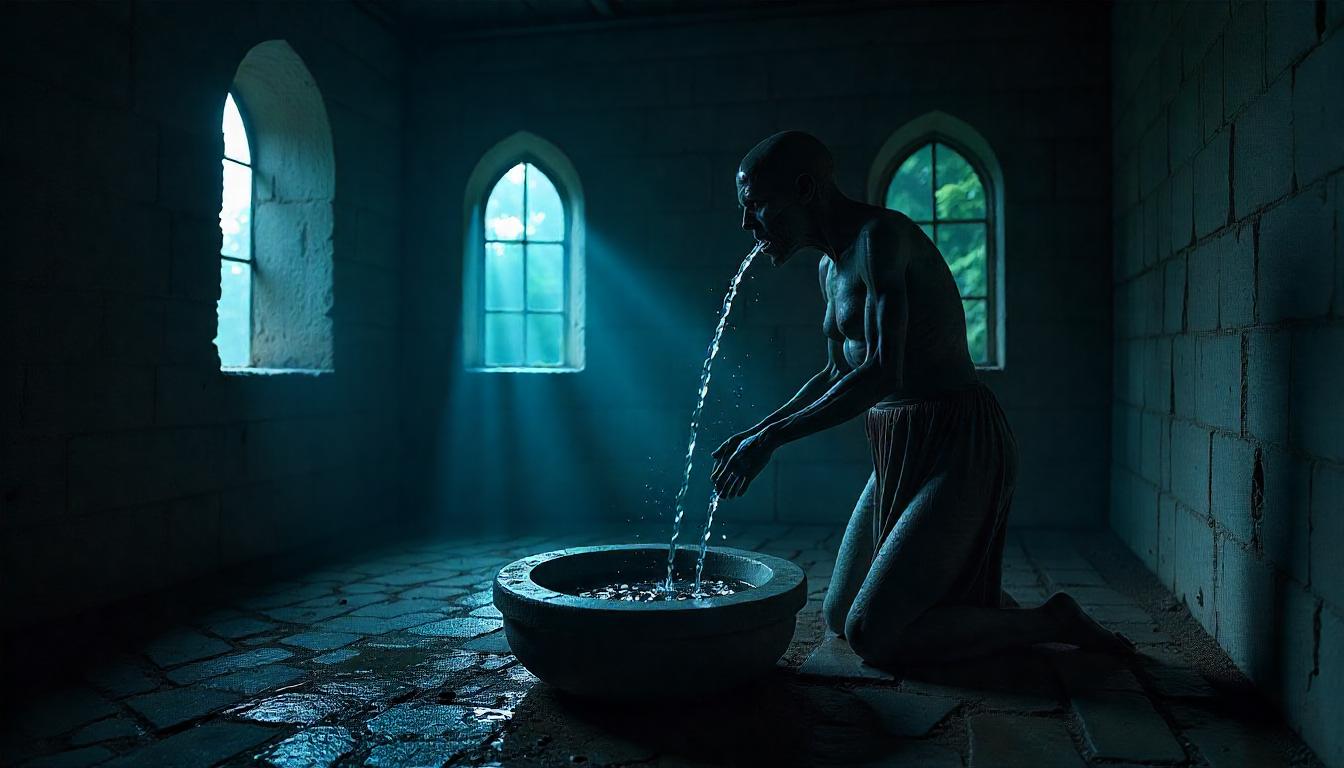Amnesia: The Dark Descent is a critically acclaimed survival horror game that immerses players in a chilling, story-driven experience. Developed by Frictional Games, it follows protagonist Daniel as he explores a desolate Prussian castle while grappling with his erased memory, lurking monsters, and a sinister past. Combining first-person exploration, environmental puzzles, and a sanity mechanic, the game is renowned for its intense atmosphere, masterful sound design, and psychological depth.
Full Description:
Introduction
Amnesia: The Dark Descent, released in 2010, stands as one of the most iconic entries in the survival horror genre. Developed by Frictional Games, this first-person adventure pushes the boundaries of fear, immersing players in a hauntingly atmospheric world filled with tension, mystery, and dread. The game redefined horror gaming by focusing on psychological terror rather than relying solely on jump scares or combat mechanics.
Story Overview
The game begins with protagonist Daniel waking up in the eerie halls of Castle Brennenburg, with no memory of who he is or how he got there. He discovers a note addressed to himself, revealing that he purposely drank an amnesia-inducing potion to forget the horrors of his past. Daniel learns that he must descend into the castle’s depths to kill a mysterious man named Alexander, who is tied to dark, supernatural forces.
As players venture deeper, they unravel the grim truth about Daniel’s involvement in horrific experiments, the torment of innocents, and his descent into guilt and madness. The narrative is told through scattered journal entries, environmental storytelling, and occasional hallucinations, crafting an immersive and chilling experience.
Gameplay Mechanics
- Exploration and Puzzles
Amnesia emphasizes exploration in its dark, labyrinthine environments. Players navigate through rooms and corridors, solving physics-based puzzles and finding essential items. Tasks range from repairing machinery to unlocking doors, all while avoiding deadly threats. - Sanity System
A core mechanic of the game is the sanity system. Staying in darkness too long, witnessing disturbing events, or encountering monsters causes Daniel’s sanity to deteriorate. This results in disorienting effects like blurred vision, auditory hallucinations, and loss of control, heightening the sense of vulnerability. - Resource Management
Players must conserve oil for their lantern and tinderboxes to light torches and candles. Balancing light sources with stealth is critical, as light attracts enemies but also helps maintain sanity. - Enemy Encounters
The game features a “no-combat” design philosophy, forcing players to evade or hide from terrifying monsters instead of fighting them. Encounters are unpredictable, with enemies roaming the castle, creating an atmosphere of constant tension.
Atmosphere and Presentation
- Sound Design
Amnesia’s sound design is a masterpiece, utilizing ambient noises, distant footsteps, and unsettling growls to immerse players. The lack of a traditional soundtrack amplifies the feeling of isolation, with every creak and whisper contributing to the dread. - Visual Aesthetic
The dimly lit corridors, decayed architecture, and oppressive darkness of Castle Brennenburg create a gothic horror atmosphere. Flickering lights and subtle visual cues keep players on edge, as danger could lurk in every shadow. - Immersive Storytelling
The fragmented narrative is pieced together through environmental details, notes, and Daniel’s memories, encouraging players to explore and connect the dots. This approach engages players intellectually and emotionally, making the horror feel deeply personal.
Themes and Psychological Depth
Amnesia delves into themes of guilt, morality, and the fragility of the human mind. Daniel’s journey is not just physical but psychological, as he confronts his culpability in past atrocities. The game examines how far individuals will go to escape their fears or absolve their sins, creating a morally complex protagonist.
Critical Reception and Legacy
Amnesia: The Dark Descent received widespread acclaim for its innovative approach to horror. Critics praised its atmosphere, storytelling, and the absence of combat, which emphasized survival and stealth. It influenced a generation of horror games, inspiring titles like Outlast and SOMA (also developed by Frictional Games).
The game spawned a dedicated fanbase, leading to user-generated content through custom stories and mods. Its impact on the gaming industry is evident, cementing its status as a classic in the survival horror genre.
Tips for New Players
- Conserve Resources: Use oil and tinderboxes sparingly; darkness can be your ally and enemy.
- Embrace the Fear: Avoid trying to “win” against monsters—hiding is often the best strategy.
- Explore Thoroughly: Notes and environmental clues are key to understanding the story and solving puzzles.
- Manage Sanity: Stay in well-lit areas when possible but avoid overusing your lantern.
Conclusion
Amnesia: The Dark Descent is more than just a horror game—it’s an unforgettable experience that challenges players to confront fear on multiple levels. Its blend of immersive storytelling, innovative mechanics, and atmospheric tension creates a hauntingly unique journey. Whether you’re a seasoned horror enthusiast or a curious newcomer, descending into the depths of Castle Brennenburg is an experience you won’t soon forget.
